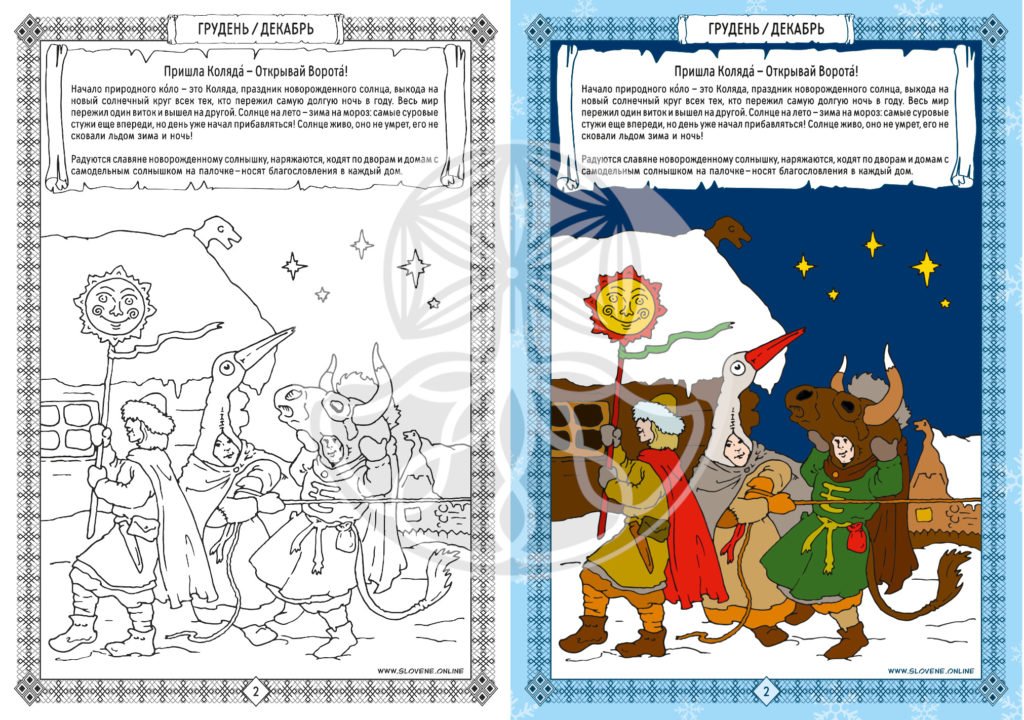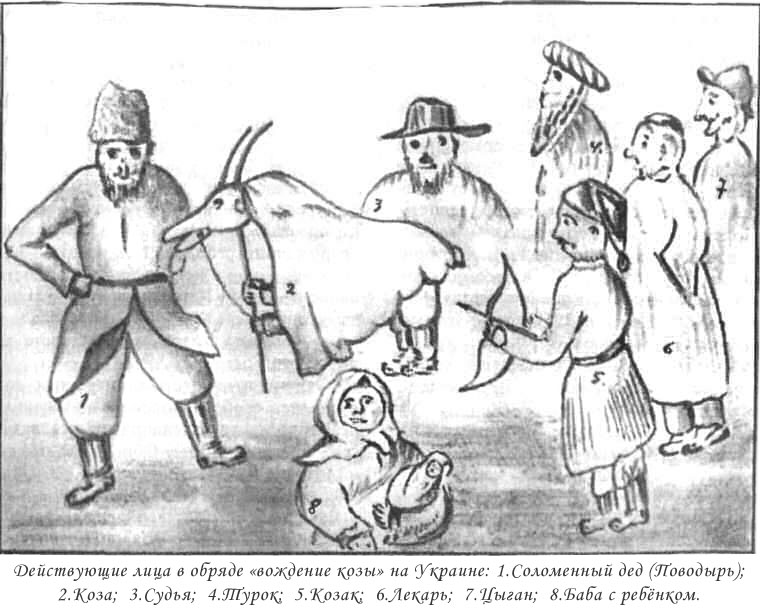The beginning of a new kolo (old Slavonic word for “circle”) is Kolyada, the celebration of the newborn sun, the beginning of the new solar circle for all those who survived the longest night of the year. The whole world has completed one round and has entered another. The most severe colds are yet to come, but the day has already begun to increase! The sun is alive, it will not die, winter and night have not frozen it!
ꏍ
The Slavs rejoice at the newborn sun, dress up for celebration, walk around the houses with a self-made sun on a stick – they carry blessings to every house.
ꏍ
Caroling (kolyada) is an old Slavic ritual
Caroling (kolyada, koleda) is an old Slavic ritual timed to the period after winter solstice and before the new year. A group of participants visits neighboring houses, performs songs and chants good wishes addressed to the owners of each house – for which they receive various gifts.
ꏍ
In the Eastern Slavic calendar rituals, such as Kolyada and Maslennitsa, there is always a character dressed like a goat or with a goat mask. The attributes of the masked goat are usually a fur coat turned inside out, a wooden head with horns, a straw (or vine) beard and sometimes a moving lower jaw.
ꏍ
The goat in Slavic tradition is a symbol and stimulator of fertility. At the same time, it is considered an animal of demonic nature; acts as a representation of evil spirits and at the same time as a guardian from them.
ꏍ
The core of the eastern Slavic new year ritual of “walking a goat” is a song with a chorus “Oh-ho, goat”, where a story of the future harvest is told in “exaggerated manner” (“where the goat walks, it will give birth there”, “where the goat has a horn, there is a harvest “,” where a goat has a tail, there is bread “and the like). The song is accompanied by a dance, the central moment of which is the “dying” and “resurrection” of the Goat, which symbolizes the cycle of time and the rebirth of nature.
ꏍ
Source: “Slavic mythology. Encyclopedic Dictionary “, 2019 // Institute of Slavic Studies of the Russian Academy of Sciences
ꏍ
Drawing by L. S. Lenchevsky and T. N. Safonovsky to the ethnographic description of the “Goat” ritual in 1926 (the village of Kuncha, Ukraine). The caption under the picture lists the characters: 1) Straw grandfather, 2) Goat, 3) Judge, 4) Turk, 5) Cossack, 6) Doctor, 7) Gypsy, 8) Woman with a child
ꏍ

